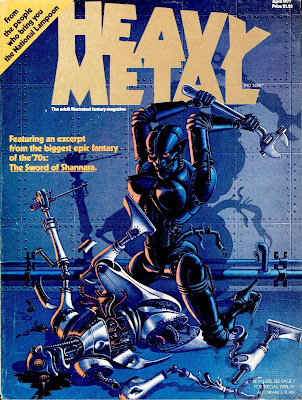Marvel Comics, 2004
In 2004 Marvel Comics decided to capitalize on the release of the film Blade: Trinity by taking material previously published in the mid-70s in its Curtis line of black-and-white comic magazines, and packaging it - along with some 90s one-shot comics - as a trade paperback compilation titled 'Blade: Black and White'.
There are two main entries in 'Black and White'. One is the two-part story written by Marv Wolfman, and illustrated by Tony DeZuniga, that appeared in issues 8 and 9 of Vampire Tales (December 1974 / February 1975).
Also in the collection is 'The Night Josie Harper Died' , with story by Chris Claremont and art again by De Zuniga, from Marvel Preview No. 3 (September 1975).
Rounding things out is a six-page strip, 'Into the House of Terror', from issue 8 of Marvel Preview (September 1976); a short strip, 'Into the Tomb', from Marvel: Shadows and Light No.1 (February 1997); and a longer tale, 'Crescent City Blues', from the one-shot Blade No. 1 (March 1998).
The entries from the 70s magazines are disappointing. As was the custom of the 'Marvel Method' at the time that they were published, the scripts for these comics took precedence over the art, and as a result, they are severely over-written, with an excessive number of panels so overcrowded with speech balloons that it's often difficult to tell exactly what is going on.
It also doesn't help matters that the reproductions in 'Blade: Black and White' are very poor. It looks like Marvel didn't have access to the original artwork, and instead made scans of the printed magazines.......?!
It goes without saying that the depiction of Blade in these comics is nowhere near the depiction of the character as portrayed by Wesley Snipes in the feature films; in these 70s comics, Blade looks more like a nerd than a superhero. As well, the vampire-killing action is rather restrained, considering that the black and white magazines were exempt from the Comics Code.
Of the 1990s Blade comics presented in this compilation, 'Into the Tomb' (1997) is probably the best, due to the artwork by Ladronn, which shows a Jack Kirby - inspired visual style.
The 1998 entry, 'Crescent City Blues', has a good script by Christopher Golden, who nowadays does a lot of writing for Dark Horse comics and its Hellboy-related titles. However, 'Crescent' is undermined by mediocre artwork from Gene Colan, who - in his later days as an artist - tended to produce hasty, half-finished work in an effort to maximize his output.
The 1998 entry, 'Crescent City Blues', has a good script by Christopher Golden, who nowadays does a lot of writing for Dark Horse comics and its Hellboy-related titles. However, 'Crescent' is undermined by mediocre artwork from Gene Colan, who - in his later days as an artist - tended to produce hasty, half-finished work in an effort to maximize his output.





















































































